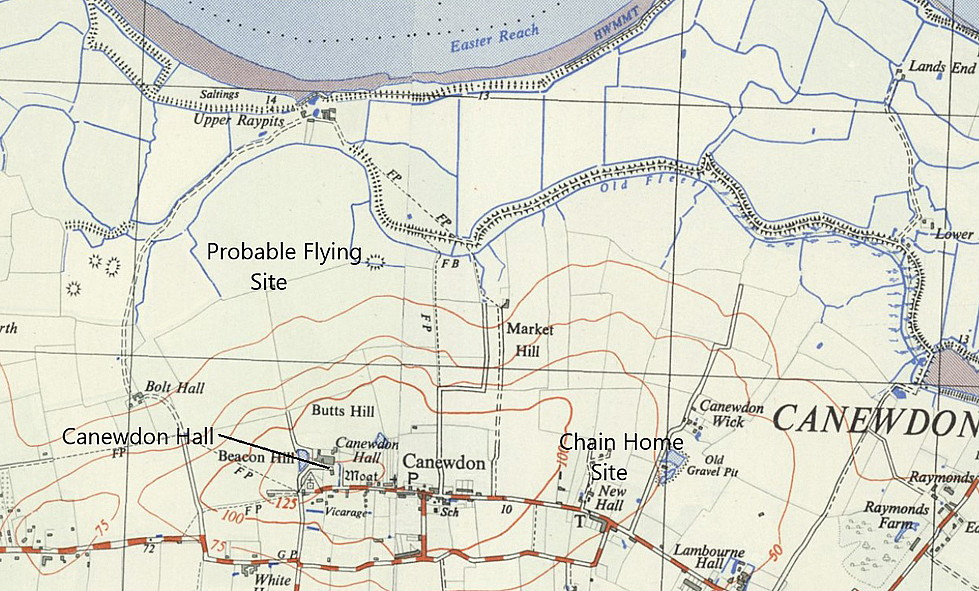Canewdon
CANEWDON: Early experimental flying site
NOTES: Canewdon village is roughly 4nm NE of Rochford.
It seems that the single seat tractor monoplane designed and built by Mr Eugene V Gratze in 1909, known as the “Daisy”, was taken to CANEWDON in June 1910 for further testing after having flown elsewhere in November 1909.
Canewdon has another crucial connection with aviation history though, as it was here that one of the first in the chains of Radar Stations were erected along with Dover for example. I trust that everybody now agrees that without the chain of radar stations the 'Battle of Britain' was probably a lost cause?
A MICHAEL T HOLDER GALLERY
We need to thank Mike Holder, a great friend of this 'Guide', for investigating old press reports and providing maps and pictures.
This Short article One was published in the Newry Reporter on the 29th July 1909. It would certainly seem that Mr Eugene Gratze was 'jumping the gun' here, with basically an unproven aircraft. What I find very interesting is that Claude Grahame-White is not mentioned, and apart from Paulhan the other three did not make it to the start. In fact only Paulhan and Grahame-White competed.
The excerpt is from Essex and its Race for the Skies by Graham Smith.
The two photos were published in Flight magazine on the 28th May 1910, and the article ten days later on the 28th May.
The Short article Two was published in the Dover Express on the 3rd June 1910. Clearly Mr Gratze was determined to attempt to win one of the huge prize monies being offered in those days, but with his machine, (as aeroplanes were then called), he stood no chance.
As mentioned above, the chain of radar stations linked to a central command centre for each sector which in turn gave instructions to the RAF Stations, (aerodromes), at short notice.
This was a crucial part in winning the so called "Battle of Britain". Which of course was nothing of the sort, most of the RAF forces barely taking part in that conflict which was mostly concentrated on Kent and Sussex.
MORE NOTES
The local area view is from my Google Earth © derived database. But I digress. I think it is very important when looking at that early period of powered flight, that we need to clearly differentiate between designs that 'hopped' in ground effect, like the original Wright Flyer, and those that actually managed to fly. Getting a machine airborne is most certainly not flying. If stupid enough I can get my car airborne, for roughly the same distance as that first 'hop' by the Wright brothers by driving over a humptey-back bridge at 100mph.
JUST AN OPINION
When I was taught to fly back in the late 1980s, we had to learn quite a bit about how aeroplanes fly. Basically a structure arranged around the centre of gravity and the centre of lift - created by the wing of course - and preferably, more or less in the same place. So....looking at the pictures of Mr Gratze's machine, and the descriptions provided, and asked to design the worst possible aircraft, (on the back of a fag packet), I reckon his design would be in the frame.
Having the pitch control mounted high on the airframe seems a bad idea? There is no 'moment arm' involved - or very little. However, I am quite convinced that this is the very earliest example seen of using 'vectored thrust'. But, what would be the result of directing the thrust produced by the propeller from one wing towards the other? Surely a dramatic reduction in lift on one side and increased lift on the other, resulting in both strong yawing and roll forces. small wonder then that he lost control encountering a gust.
We'd love to hear from you, so please scroll down to leave a comment!
Leave a comment ...
Copyright (c) UK Airfield Guide




























